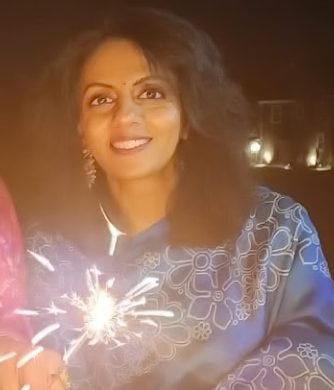
As we celebrated Diwali this weekend, I hope you all had a great time with family, friends, and coworkers, sharing sweet treats, bursting firecrackers, lighting diyas, and creating lasting memories.
As we approach Thanksgiving holidays, I am remembering how we came together as a community in the spirit of gratitude and contributed to help the differently abled children back home. As war rages in parts of the world and people are fleeing their homes, I am reminded not to take for granted the peace and comforts that surround us.
The COMA Christmas celebrations are around the corner. Do keep an eye for when the ticketing will open up. Looking forward to seeing you all at the event.
Hope you all had a joyous Diwali, and wishing all of you a heartfelt Thanksgiving in advance!
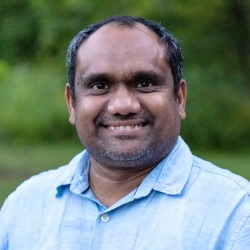
യെശോധരാ കി ചരിത്ര് – by Sachin Sugathan
(Sachin has been an active member of COMA from 2011, and lives with his wife Preeti and daughter Sahasra in Galena, Ohio.)
പരീക്ഷയിൽ മാർക്ക് ലഭിക്കാൻ മലയാളത്തെക്കാൾ എളുപ്പമായതുകൊണ്ടും, സുഗമ പരീക്ഷയുടെ കുറെ സർട്ടിഫിക്കറ്റ് ലഭിച്ചതിന്റെ അഹങ്കാരംകൊണ്ടും, പ്രീ ഡിഗ്രിക്ക് ചേരുമ്പോൾ ഞാൻ ഹിന്ദി തന്നെ സെക്കൻഡ് ലാംഗ്വേജ് ആയി തിരഞ്ഞെടുത്തു. ലാംഗ്വേജ് ക്ലാസ്സുകളിൽ കയറാത്ത ഞങ്ങൾ, പരീക്ഷ അടുക്കുമ്പോൾ സിലബസിലെ പുസ്തകൾ ഓടിച്ചു പഠിക്കുകയാണ് പതിവ്.
ആ വർഷത്തെ ഹിന്ദി സിലബസ്സിൽ നാലു പുസ്തകങ്ങൾ ആയിരുന്നു. പതിനഞ്ചു മാർക്ക് വീതം ലഭിക്കുന്ന അവസാനത്തെ രണ്ടു എസ്സേ ചോദ്യങ്ങളാണ് മിനിമം പാസ് മാർക്കുമാത്രം ഉന്നംവെക്കുന്ന എന്നെപോലുള്ളവരുടെ വിജയരഹസ്യം. ഓരോന്നുവീതം തിരഞ്ഞെടുക്കാവുന്ന രണ്ട് സെറ്റ് ചോദ്യങ്ങൾ. അവ ഓരോന്നും നേരത്തെ പറഞ്ഞ നാല് പുസ്തകങ്ങളിൽ നിന്ന്. ഞാൻ മൂന്ന് പുസ്തകങ്ങൾ പഠിക്കുകയും നാലാമത്തേത് മൊത്തമായീ ഉപേക്ഷിക്കുകയും ചെയ്തു. ചെറിയ മാർക്കിന്റെ ചില ചോദ്യങ്ങൾ നഷ്ട്ടപെടുമെങ്കിലും അവസാനത്തെ എസ്സേ നഷ്ടപ്പെടാൻ വകുപ്പില്ല, പോരാത്തതിന് നാലാമത്തെ പുസ്തകം കബീർ ദാസിന്റെയോ സൂർദാസിന്റെയോ (വ്യക്തമായി ഓർക്കുന്നില്ല) ഒരു കടുകട്ടി കവിതയാണ്, അത് എന്നെകൊണ്ട് കൂട്ടിയാൽ കൂടില്ല.
എൻ്റെ കണക്കുകൂട്ടലുകൾ ഒക്കെ തകിടം മറച്ചുകൊണ്ട് പരീക്ഷയ്ക്ക് തൊട്ടു മുൻപ് എന്റെ ഒരു സുഹൃത്ത് അനീഷ് ആ വാർത്ത എന്നോട് പറഞ്ഞു: ഈ വർഷം ഹിന്ദിക്ക് നാലല്ല, അഞ്ചു പുസ്തകങ്ങൾ ഉണ്ട്. ഞാൻ വാച്ചിലേക്ക് നോക്കി, പരിഷയ്ക്കുള്ള ബെൽ അടിക്കാൻ പതിനഞ്ചു മിനിറ്റ് മാത്രം. അപ്പോഴേക്കും എനിക്ക് അപരിചിതമായ ആ പുസ്തകം അവൻ എനിക്ക് നേരെ നീട്ടി.
സുബാഷ്!! ആറു ചെറുകഥകളുടെ ഒരു സമാഹാരം!!!!
എൻ്റെ സംഭാവ്യത സിദ്ധാന്തമൊക്കെ കാറ്റത്തു പറത്തിയ ആ പുസ്തകം ഞാൻ അവനു തന്നെ തിരിച്ചു നൽകി. രാഷ്ട്രഭാഷയെ ഭാഗ്യദേവതയുടെ കൈകളിൽ ഏൽപ്പിച്ചു ഞാൻ പരീക്ഷ ഹാളിലേക്ക് കയറി. ചോദ്യപേപ്പർ കൈയ്യിൽകിട്ടിയപ്പോൾ ഞാൻ ആദ്യം നോക്കിയത് അവസാനത്തെ രണ്ട് ചോദ്യങ്ങളാണ്. ഞാൻ ഭയന്നതു തന്നെ സംഭവിച്ചു, പഠിക്കാത്ത രണ്ടു പുസ്തകങ്ങളിലെ ചോദ്യങ്ങൾ തന്നെ. ആ ദാസേട്ടന്റെ ദോഹയിൽ നിന്ന് ഒന്നും, രണ്ടാമത്തേത് ഏതോ ചെറുകഥയിൽ നിന്നും.
ആ ചെറുകഥയിലെ ചോദ്യം ഞാൻ ഒന്നുകൂടി കണ്ണോടിച്ചു, “യെശോധരാ കി ചരിത്ര് കെ ബാരേ മേ ലിഖിയേ”. കാഡ്ബറിസ് പരസ്യത്തിൽ എന്നതുപോലെ എൻ്റെ മനസ്സിൽ ഒരു ലഡ്ഡു പൊട്ടി. ശ്രീ കൃഷ്ണ ഭഗവാന്റെ വളർത്തമ്മയായ യെശോധരയെപ്പറ്റി എഴുതാനോ പഞ്ഞം? അറ്റുപോയ പ്രതീക്ഷകൾ എന്നിലേക്ക് തിരിച്ചെത്തി. “തദ്ശ്രീ മഹാഭാരത് കഥ…” എന്ന് തുടങ്ങി “സംഭവാമി യുഗേ യുഗേയിൽ “ അവസാനിക്കുന്ന അതിമനോഹരമായ ടൈറ്റിൽ സോങിന്റ അകമ്പടിയോടെ തുടങ്ങുന്ന ബി ആർ ചോപ്രയുടെ മഹാഭാരതം ദൂരദർശനിൽ കണ്ടത് വെറുതെ ആയില്ല.
എന്തെന്നില്ലാത്ത ഒരു ആത്മവിശ്വാസം എൻ്റെ ഉള്ളിൽ അലയടിച്ചു, കൈയിൽ കിടന്ന വാച്ച് സമയം കാണാവുന്ന രീതിയിൽ ഡെസ്കിന് മുകളിൽ ഊരിവെച്ചു… പോക്കറ്റിലിരുന്ന ബ്ലൂ ആൻഡ് വൈറ്റ് റെയ്നോൾഡ്സ് പേനയിൽ ഒന്ന് വാച്ചിനരികെ വെച്ചു. മറ്റേതിന്റെ ടോപ് ഊരി ഉത്തരകടലാസിൽ എൻ്റെ റോൾ നമ്പർ എഴുതി. പരീക്ഷയുടെ അവസാനത്തെ 20 മിനിറ്റ് ഞാൻ “യെശോധരാ കി ചരിത്ര് കെ ബാരേ മേ ലിഖിയേ” എന്ന ചോദ്യത്തിന് മാറ്റി വെച്ചു, ബാക്കി ചോദ്യങ്ങളിലേക്ക് കടന്നു. അങ്ങനെ ഞാൻ ആ അവസാനത്തെ ചോദ്യത്തിൽ എത്തിയപ്പോൾ വാച്ചിൽ ബാക്കി സമയം 30 മിനിറ്റ്.
ഉണ്ണിക്കണ്ണനെ പറ്റിയും, വളർത്തമ്മയെ പറ്റിയും ഞാൻ അനർഘനിർഗ്ഗളമായി എഴുതി. യമുന നദിതീരത്തടിക്കുന്ന തിരമാലകൾ എന്തുകൊണ്ടാണ് അമ്മേ തിരിച്ചുപോകാത്തതു എന്ന് ചോദിച്ച ഉണ്ണിക്കണ്ണനോട്, “കണ്ണാ നിന്റെ വേണുഗാനത്തിന്റെ ഓളങ്ങളിൽ അവയലിഞ്ഞു ചേരുന്നതാവാം” എന്ന് പറഞ്ഞ യെശോദര.. വെണ്ണ കട്ടുതിന്നപ്പോൾ ശാസിച്ചതും, മണ്ണുവാരിത്തിന്ന കണ്ണന്റെ വായിൽ ഈ പ്രപഞ്ചം മൊത്തം കണ്ടതും, ഉരലിൽ കെട്ടിയിട്ടപ്പോൾ അതും കൊണ്ട് ഗ്രമാം മൊത്തം കറങ്ങിയതും, എല്ലാം അടിച്ചു വിട്ടു. ഉരലിന്റെ ഹിന്ദി അറിയാത്തതു കൊണ്ട് ഞാൻ ഉരൽ എന്ന് തന്നെ അങ്ങ് കാച്ചി. അന്ന് രണ്ടോ മൂന്നോ അഡിഷണൽ പേപ്പറുകൾ ഞാൻ വാങ്ങി. അത് വാങ്ങുമ്പോൾ സുഹൃത്തുക്കളുടെ അസ്സൂയ കലർന്ന നോട്ടം ഞാൻ നന്നേ ആസ്വദിച്ചു. പരീക്ഷയുടെ അവസാന ബെൽ അടിക്കുന്നതു വരെ ഞാൻ എഴുതി. പേപ്പർ ടീച്ചറുടെ കൈകളിൽ ഏൽപ്പിക്കുമ്പോൾ, മലയാളം ലിപി പോലെ ഹിന്ദിക്ക് ഈ തലവര ഇല്ലായിരുന്നെങ്കിൽ കുറച്ചുകൂടി എഴുതാമായിരുന്നു എന്ന് ഞാൻ എന്നോട് തന്നെ പറഞ്ഞു.
പരീക്ഷാഹാളിൽ നിന്നും പുറത്തിറങ്ങിയ ഞാൻ, മൈക്കിൾ ജോർഡൻ ബാസ്കറ്റ്ബോൾ കറക്കുന്നതു പോലെ എൻ്റെ ഹിന്ദി പുസ്തകം ചൂണ്ടുവിരലിൽ കറക്കി സൂവോളജി ബ്ലോക്കിൽ സ്ഥിതി ചെയ്യുന്ന എൻ്റെ ക്ലാസ്റൂമിലെക്കു നടന്നു. അവിടെ വെച്ചാണ് ക്ലാസ്സിലെ പെൺജനങ്ങൾ ചോദ്യക്കടലാസ് പോസ്റ്മോർട്ടമ്മ് നടത്തുന്നത്. അവർക്ക് ചുറ്റും കൂടിനിൽക്കുന്ന ആൺജനങ്ങളുടെ കൂടെ ഞാനും ചേർന്നു. അപ്പോൾ എന്നെ കണ്ട അതേ സുഹൃത്ത് അനീഷ്, എന്നെ കുത്തിനോവിക്കാൻ എന്നതുപോലെ ചോദിച്ചു, “അവസാനത്തെ ചോദ്യം എന്ത് ചെയ്തു?”
ഞാൻ എൻ്റെ വീരകഥ പറയാൻ തുടങ്ങിയതും അവിടെ ഒരു കൂട്ടച്ചിരി പൊട്ടിപ്പുറപ്പെട്ടു. എനിക്ക് ഒന്നും മനസിലാക്കുന്നുണ്ടായിരുന്നില്ല. ആ ചിരി അൽപ്പനേരം തുടർന്നു. എൻ്റെ അവസ്ഥയിൽ സഹതാപം തോന്നിയിട്ടാവാം, ചിരി അടക്കി പിടിച്ചു നിദ അവളുടെ തട്ടം മുന്നോട്ടു വലിച്ചുകൊണ്ടു പറഞ്ഞു, “എടാ നീ എഴുതിയതു യെശോദാ, ഇത് യെശോദര, ബുദ്ധന്റെ ഭാര്യ”. ഒരു ഇടിമിന്നൽ എൻ്റെ ഉള്ളിൽകൂടി കടന്നുപോകുന്നതായി എനിക്കു അനുഭവപെട്ടു. ഒന്നടങ്ങിയിരുന്ന ആ കൂട്ട ചിരി പൂർവാധികം ശക്തിയോടെ തിരിച്ചു വന്നു. സിംക്കിന് ചിരിച്ചു ചിരിച്ചു തറയിൽ വീണു, ഷിനോജ് അവന്റെ രണ്ടു കൈകളും എൻ്റെ തോളിൽ വെച്ച് എന്നെ മൊത്തത്തിൽ ഒന്ന് കുലുക്കി കൊണ്ട് പറഞ്ഞു, “നീ ഒരു ഒന്നൊന്നര സംഭവം തന്നെ”.
ആ ചിരി തുടർന്നു, കൂറേ നേരം. ഞാൻ ഇതികര്ത്തവ്യതാമൂഢനായി അവരുടെ നടുവിൽ നിന്നു… എവിടെയോ കേട്ടുമറന്ന “രംഗബോധമില്ലാത്ത കോമാളി” എന്ന പ്രയോഗത്തിൻ്റെ അർത്ഥം ഞാൻ അന്ന് അനുഭവിച്ചറിഞ്ഞു. ചിരികൾ അടങ്ങിയപ്പോൾ, അടുത്ത ആഴ്ച്ച നടക്കാനിരിക്കുന്ന കെമിസ്ട്രി പരീക്ഷയെ കുറിച്ചായി സംസാരം. പരീക്ഷകളെ പറ്റിയും അതിൽ വരാൻ സാധ്യതയുള്ള ചോദ്യങ്ങളെക്കുറിച്ചും എനിക്ക് കേൾക്കാൻ ഒരു താൽപ്പര്യവും തോന്നിയില്ല. ഞാൻ അവരുടെ സംസാരം കേൾക്കാതെ കേട്ടുകൊണ്ടിരുന്നു. വിഷയം ഓസ്ട്രേലിയയിൽ നടക്കുന്ന ഏകദിന പരമ്പരയിലേക്ക് കടന്നു.
അന്ന് ഞാൻ ജീവിതത്തിൽ ആദ്യമായി സച്ചിൻ ടെണ്ടുൽക്കറെ പറ്റി വാചാലനായില്ല. കേരളവർമ്മ കോളേജിൽ നിന്ന് പടിഞ്ഞാറെകോട്ട ബസ്സ്റ്റോപ്പിലേക്കുള്ള ദൂരം 2 KM ആണ്. സ്വതവെ ആസ്വദിക്കാറുള്ള സുഹ്രുത്തുക്കളുമായുള്ള ആ നടത്തം, അന്ന് എൻ്റെ മനസ്സിൽ വല്ലാത്തൊരു വിരസത ഉളവാക്കി. വീട്ടിലേക്കുള്ള യാത്രാമധ്യെ ബസ്സിലിരിക്കുമ്പോൾ ഞാൻ ആ ചോദ്യപേപ്പർ ഒന്നുകൂടി കണ്ണോടിച്ചു, അവസാനത്തെ ചോദ്യത്തിന് നാലോ അഞ്ചോ മാർക്ക് കിട്ടാതെ പാസ്സാകുന്ന കാര്യം നോക്കണ്ട, സപ്പ്ളി തന്നെ രക്ഷ.
ദിവസങ്ങൾ കടന്നു പോയി, പ്രീ ഡിഗ്രി റിസൾട്ട് വന്നു. അത്ഭുതം എന്നു പറയട്ടെ, ഞാൻ ഹിന്ദിയിൽ പാസ്സായി. മാർക്ലിസ്റ്റ് കയ്യിൽകിട്ടിയപ്പോൾ ഹിന്ദിയിൽ പാസ്സ്മാർക്കിനെക്കാളും 11 മാർക്ക് കൂടുതലുണ്ട്. ആ അവസാനത്തെ ചോദ്യത്തിന് പത്തിൽ കുറയാതെ മാർക്ക് ലഭിച്ചിട്ടുണ്ട് എന്നുറപ്പ്. ഇതെങ്ങനെ സംഭവിച്ചു? വീട്ടിൽ വന്നിട്ട് ഞാൻ വിവരം അമ്മയോട് പറഞ്ഞു. പേപ്പർ നോക്കിയ ആ ടീച്ചർ എന്തിനാവും എനിക്ക് മാർക്ക് തന്നത്? ഞാൻ അമ്മയോട് ചോദിച്ചപ്പോൾ, അമ്മ ചിരിച്ചുകൊണ്ട് ആരോടെന്നില്ലാതെ പറഞ്ഞു, “തൃശ്ശൂർ അല്ലേ, ഗുരുവായൂരപ്പന്റെ സ്വന്തം നാട്. കള്ളക്കൃഷ്ണാ, എല്ലാം നിന്റെ മായ”. ഞങ്ങൾ ചിരിച്ചു. ഡൈനിങ്ങ് റൂമിലെ ഫ്രിഡ്ജിനു മുകളിൽ, ചുവന്ന വി ഗാർഡ് സ്റ്റെബിലൈസറിന്റെ ചൂടും പറ്റിയിരിക്കുന്ന ബുദ്ധ ഭഗവൻ ആ അമ്മയെയും മകനെയും നോക്കി പുഞ്ചിരിതൂകി..
ശുഭം
സച്ചിൻ
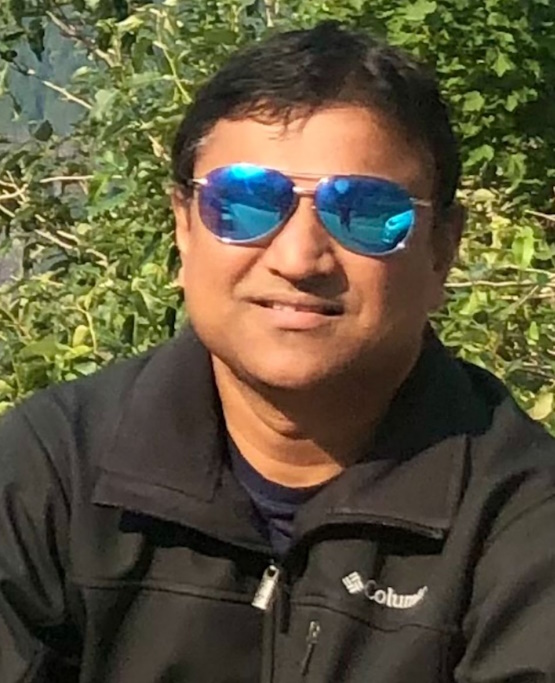
My experiences growing up as a Malayalee in Northern India – by Subin Thomas
(Subin lives in Powell, Ohio with his wife Simple and two kids, Kevin and Trisha. Subin enjoys music and outdoor activities.)
Born and raised in the North and Eastern parts of India, my experiences growing up have been very different from that of a typical Malayalee Christian raised in Kerala.
The food, culture, language, festivals that one gets to experience in North India is way different from those in Kerala or Southern India. Unlike most Malayalee kids who grow up eating the typical Kerala cuisines such as Puttu, Kadala, Dosa, and Idiyappam, I grew up eating the typical North Indian foods available at that time such as dry Roti Sabji, Daal Tadka, Aloo Tikki, etc. While most Malayalee kids grew up celebrating Onam, Vishu, or Christmas, I used to look forward to lighting fireworks during Diwali, going pandal-hopping during Durga Puja, flying kites during Makar Sankranti, and smearing watercolor on each other’s faces during Holi.
Diwali used to be my favorite festival among all. The entire town would brighten up with earthen oil lamps or candles, and fireworks were set off the entire night as part of the celebrations. Literally, no one slept for most part of the night as it was customary to keep the doors open to welcome the goddess of prosperity, Lakshmi. My next favorite festival was the kite flying during Makar Sankranti. The experience of flying colorful kites with my friends, cutting strings of each other’s kites, and running behind falling kites was an unmatched experience and the air of celebration was simply euphoric.
Growing up in the Hindi heartland enabled me to learn some of the purest forms of Hindi as well as Sanskrit which have been widely used in scriptures and classical Indian poems. Most of my friend circles were local North Indians, and hanging out with them in the temple corridors, playing cricket, or even watching a matinee show wasn’t uncommon.
It wasn’t until the mid-90’s after my parents moved to Kerala that I got to experience the state first-hand. The first few years were certainly some of the hardest in my life, trying to fit in a completely new environment with unfamiliar people. However, it improved as time went on, and I found myself drawing closer to Kerala’s vibrant culture, religious harmony, and unbelievable natural beauty. Playing with fireworks and throwing colors at each other during Diwali and Holi slowly transitioned to attending regular church service, practicing Carol songs for Christmas, and celebrating Onam with a sumptuous Sadhya.
Getting to live in both the Northern and Southern parts of India gave me the opportunity to experience the different culture, language, and lifestyles of people from both parts of the country. It enabled me to have a diverse outlook with a unique perspective. Although I felt as if there were a lot of differences among North and South Indians in terms of language and culture, deep down, people are the same and are united by emotions. I will cherish my childhood years in the Northern India for the rest of my life and I wish I could go back in time and do it all over again!

Diwali Memories – by Nisha Ajit
(Nisha Ajit lives in Dublin, Ohio with her husband Ajit Nair. She is mom to Neil and Ashwin, and is enthusiastic about dance and cooking.)
Wishing all my friends and readers a very Happy Diwali!
Diwali is a festival which always brings back the fondest childhood memories. I grew up in Durgapur, West Bengal, and as a child, the most important preparation for Diwali after the Durga puja festivities was shopping for fireworks and candles with my father and brother. We used to lay the firecrackers out in the sun for a few hours so that they crackle well. As evening approaches, we light up diyas (lamps) and pray to God. The whole family then gets together to light up the candles and diyas all around the house. Within a few minutes, the house would be all illuminated with lights and the house would be filled with the warmth of the candles and the divine smell of incense sticks, all of which sets up a positive energy in the house. We devoured the homemade sweets (especially the rosogolla and sandesh) and snacks our mother made for Diwali. Later in the evening, the most exciting part was when we got together with our friends in our neighborhood to share and burst the crackers one by one. The lighting up of the sparklers, phuljhadi, chakris, kaliphataka (fireworks), used to give us immense joy and excitement. We then used to visit and pray at the nearby Kali Puja pandals, which is celebrated too on the Diwali day.
Years passed by and as parents ourselves, during our stay at Pune, Mumbai, and now in Columbus, Diwali has always been a time for decorating home with lights, fireworks, making delicious food, and spending time with family and friends. Kids are more excited about fireworks just as we were during our childhood days. They love the savory snacks and the besan ladoos. Celebrating Diwali, or any other festival for that matter, meant re-creating old memories with my kids. Every year we look back at the wonderful years gone by and then look forward to adding more memories.
Have a fun and festive Diwali!

Naankatta / Nankhatai – by Lija Jayaraj
(Lija has been living in Columbus, Ohio for the last 12 years with her husband Roopesh, and sons Arnav and Dhruv. She is a baking enthusiast. She also likes classical dance and painting.)
Naankatta, also known as Nankhatai, is a traditional light buttery or shortbread cookie. It is very popular in India, and you may have seen it in almost all of the bakeries. The origin may be Persian because ‘Naan’ in Persian translates to bread in English, and ‘khatai’ means light and flaky biscuit. The best part of this cookie is you don’t use eggs or leavening agents like baking powder or baking soda. All you will need is all-purpose flour, sugar, ghee and green cardamom powder.
The quantity below is good to make 16 cookies.
Ingredients
- Sugar powder – 1/2 Cup
- Ghee – 1/2 Cup
- All-purpose flour – 1 Cup.
- Cardamom powder – 2 to 3, ground finely.

Method
- Once you have the ingredients ready, pre-heat the oven to 300 F.
- You may use sugar powder but you can also grind the sugar along with cardamom in a blender to get fine powder.
- Add sugar powder, cardamom powder, and ghee to a mixing bowl, and mix well to get a creamy consistency.
- Add All-Purpose Flour and knead the dough until it is mixed well (chapati consistency).
- Divide the dough to 16 equal sized balls.
- You can now flatten each ball between your palms into a circle with smooth edges. Just like you will have the dough ball ready before rolling chapathis.
- Now place the cookie dough on a baking tray; don’t forget to use parchment paper.
- Bake for 25 minutes until cookies turn slightly golden on the bottom.
- Take the tray out and let the cookies cool.
- You can now serve the cookies with a hot cup of tea or coffee.
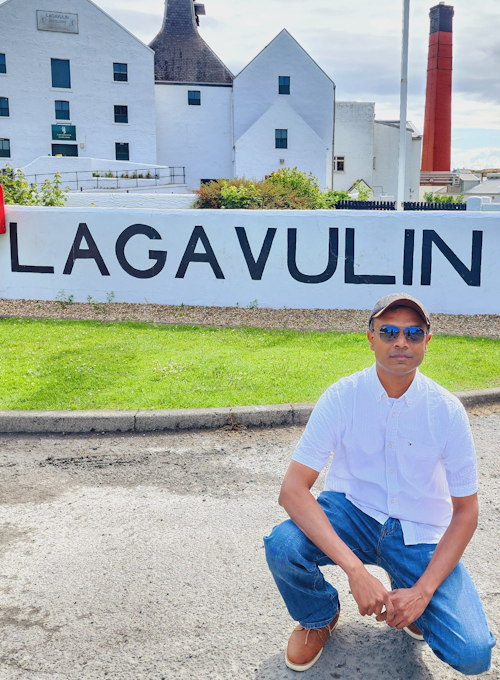
Sidecar Cocktail – Nish Nishant
(Nish is a passionate cocktail enthusiast and hobbyist mixologist, with a penchant for exploring an array of ingredients and experimenting with various spirits. Originally from Trivandrum, Kerala, he presently resides in Worthington, Ohio, with his wife Smitha and their son Rohan. He occasionally shares some of his concoctions on his Instagram profile @nishtravelfooddrink)
I love having some cognac, usually after dinner, and so when I first had a Sidecar cocktail several moons ago, I was enthralled by the fact that I could enjoy a tasty drink without losing the essence of cognac. Many people believe this drink originated at the Ritz Hotel, Paris in the early 20th century.
Ingredients
- 2 oz Cognac
- 1 oz Cointreau (or Triple Sec)
- 0.75 oz lemon juice (freshly squeezed)
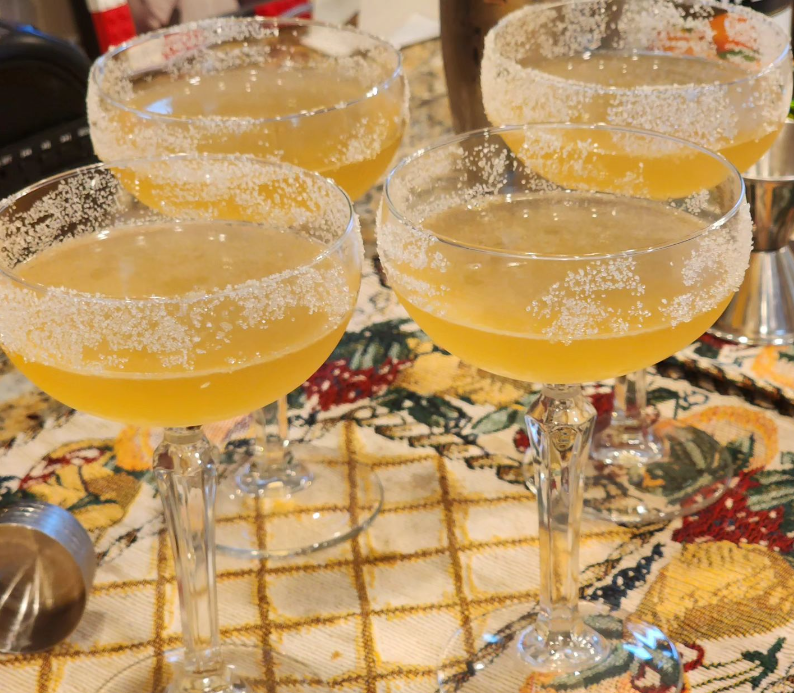
Add the cognac, Cointreau, and lemon juice into a shaker with ice, and shake well for a few seconds. Pour into a coupe glass that has been rimmed with granulated sugar. Optionally, garnish with an orange or lemon twist. While you can use any orange liquor, I’d recommend using a quality brand like Cointreau or Grand Marnier, especially if you are using a good VSOP or XO cognac.
